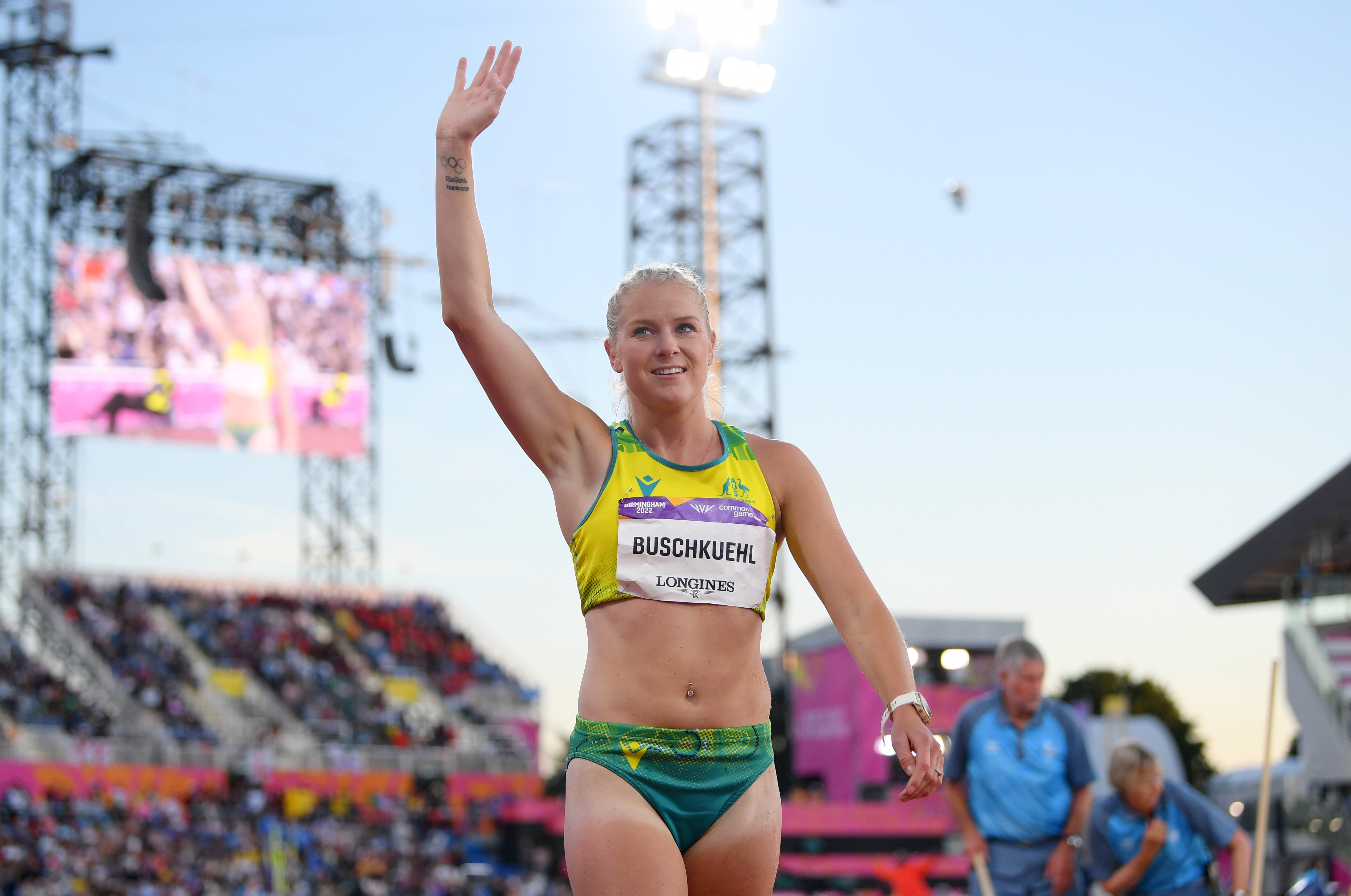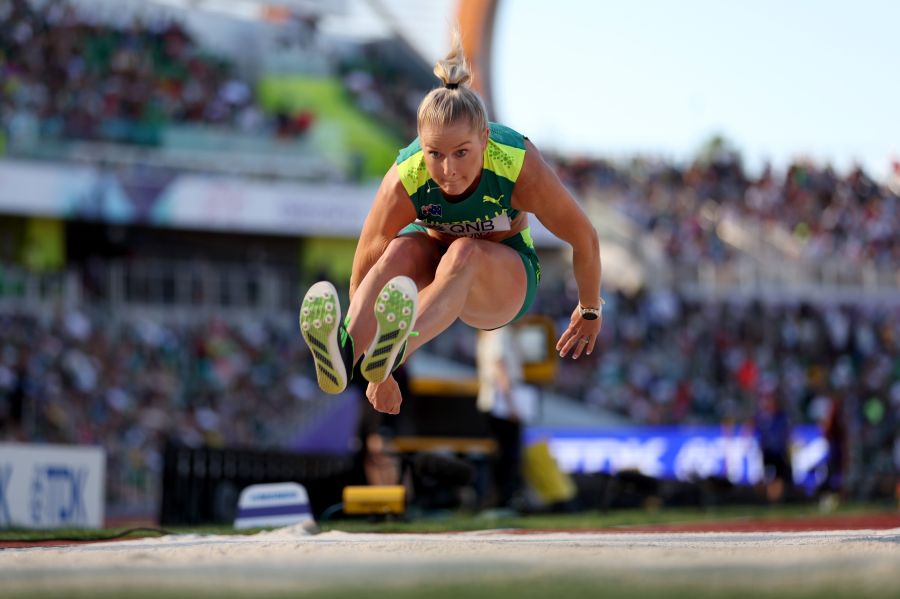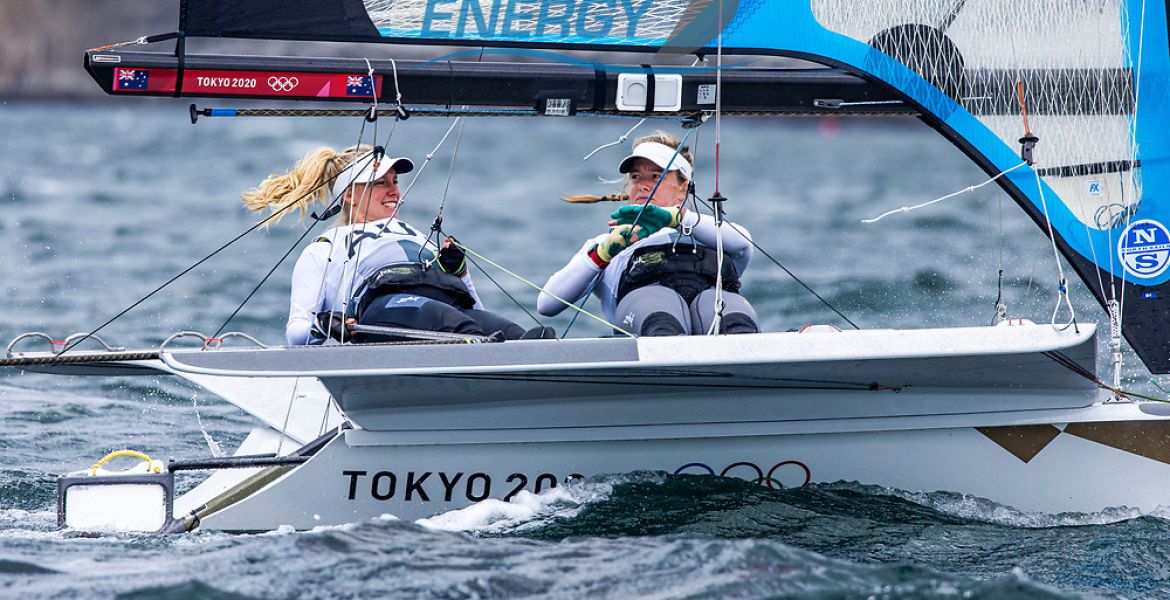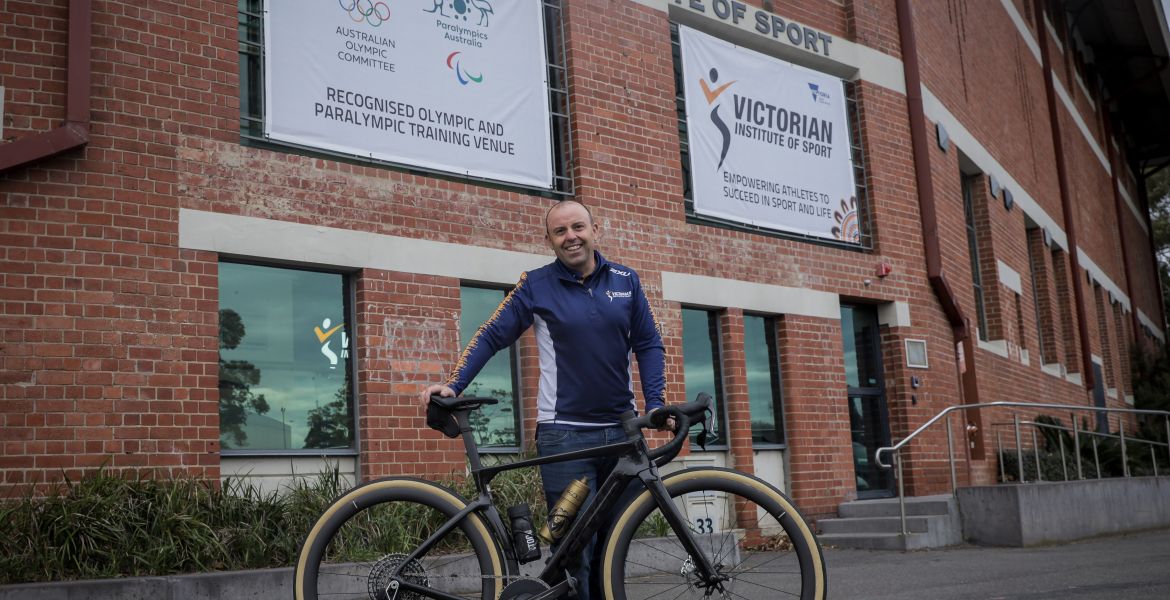In a bid to reduce the number of foul jumps in competition – it has been said that a third of all jumps in last year’s World Athletics Championships in Budapest were foul – World Athletics is preparing to experiment with a take-off zone that would replace the traditional board.
Distances would be measured from wherever in the zone an athlete jumps, with the often millimetre imperfect need to launch from as close to the front of the board removed.
World Athletics CEO Jon Ridgeon was recently quoted as saying: “We’ll measure from where the athlete takes off to where they land in the pit. That means every single jump counts. It adds to the jeopardy and drama in the competition.
“We’ll spend this year testing it in real life circumstances with very good athletes. If it doesn’t pass testing, we’ll never introduce it. At the same time we’re working out ways we can get instant results so you don’t have to wait 20-30 seconds before the result pops up.”
Buschkuehl is interested to see what may come from the trial but also sees difficulties with it that, in her mind, threaten to diminish the sport and potentially endanger it.

“I would like to try it. To see what it might mean. I’m not opposed to change and I get there is some appeal in being able to run in and not have to worry about where you are taking off from,” Buschkuehl told the Victorian Institute of Sport, where she is based much of the year.
“Basically, charging in as hard and fast as possible without losing momentum when you are trying to steer for a board or avoid a foul jump has some excitement about it.
“But if we end up there I see it removing the skill of perfecting your run-up. It would suit the athletes who struggle with steering and remove some of the art in the sport.
“Historically, long jump has required speed, technique and accuracy. It would take at least one of those skills out of the equation.”
Buschkuehl sees the threat of her event becoming something closer to a glorified sprint, more a contest of power than a combination of strength, agility and rhythm, if a take-off zone is introduced.
Nor is she convinced that the desire to speed up and shorten long jump competitions, the stated aim underpinning the trial, will make for a more entertaining event.
“It’s interesting that the idea behind the trial is to reduce the number of foul jumps, shorten the event and make it more compelling for the audience. I’m not sure that the introduction of a zone will deliver that outcome. It could be more confusing for the crowd,” Buschkuehl said.
“When you take off from a board, the crowd has the benefit of the measurements along the side of the pit to get an understanding of approximately how far an athlete has jumped. They know, roughly, the distances the athletes are jumping.
“If athletes are jumping off a zone, from various places in the zone and landing in different spots in the pit, no-one is going to know how far an athlete has jumped until it is recorded on the scoreboard. It will be impossible to compare jumps. For me, that is likely to take some of the excitement and drama out of the event for the crowd.”
A number of fellow jumpers from around the world have predicted that the introduction of a take-off zone will see every record swiftly smashed.
Buschkuehl agrees – “Comparing the distances athletes have jumped with a board with the distances jumped with a zone …..I think new records would have to be developed. Board records and zone records.” – but her greater concern is for a potential split between the sport at the highest level where money for technology is not the issue it will be for lower levels of the sport.
“How would, or could, this be introduced across the sport at every level. Will it be affordable for the lower levels? And if not, is it going to mean that emerging athletes develop in one version of the sport and switch to another very different version when they reach national or international level?
“I know at our local meets here in Victoria that, unless it is very cheap to introduce or install, it would be a problem. At the moment, it’s cost friendly to have a board and an official use their eyesight to determine if a jump is legal or not.”






















